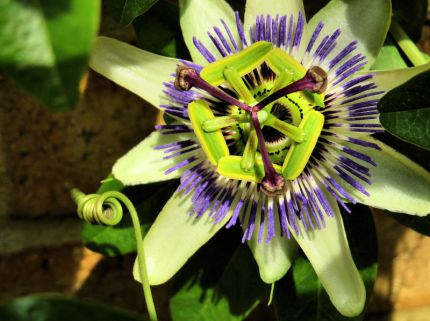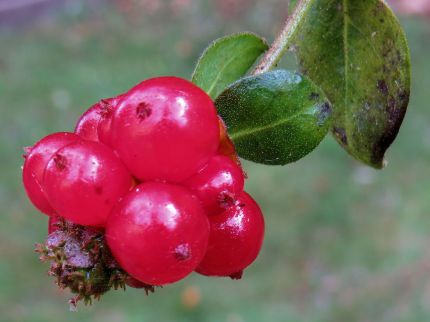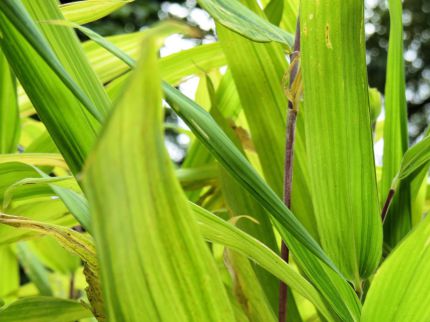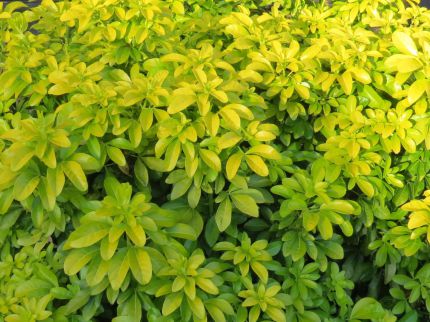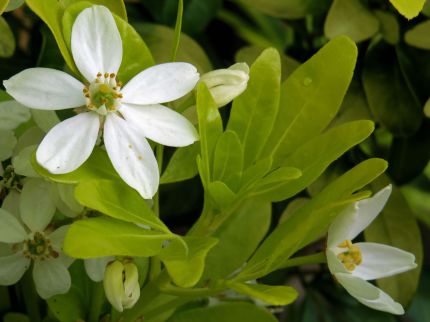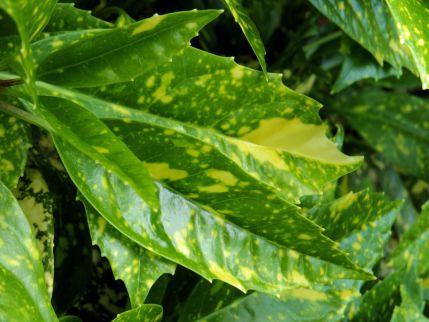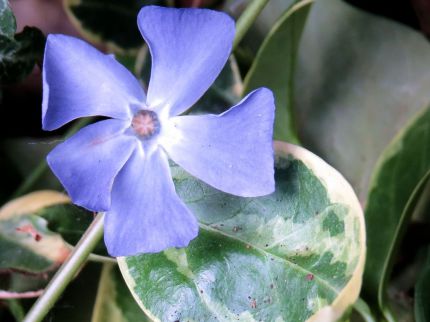
Flora
Blue passion flower
Passiflora caerulea
Blue passion flowers, from the family Passiforaceae, are hardy climbing plants with dark green leaves. They grow spiral tendrils to facilitate their climbing habit and their rather complicated flowers are up to 8cm diameter are white with blue, purple and green filaments. They bear orange ovoid fruit in autumn and winter.
Passion flowers grow best in full sun or partial shade on a sheltered trellis or pagoda and in moist but not saturated soil. They can climb to a height of 8-12m which can be attained in 5-10years, and can spread of 2-4m.
Other elements of a passion flower right to left, top to bottom: a tendril for clinging as the plant climbs; fruit emerging from the flower; the fruit and the fruit halved.
Honeysuckle
Lonicera periclymenum Belgica
Lonicera periclymenum or Honeysuckle is a species of flowering climbing plant. It climbs by twining around objects and can become rather scruffy. In the summer it produces sweetly fragrant flowers. It likes full sun or partial shade.
Photographed mid-August, the flower has little fragrance
This photo of the same flower head was taken the very next day and it now pongs but in a very beautiful way!
To care for honeysuckle, prune dead wood when necessary. The plant is usually pollinated by moths or long-tongued bees and develops bright red berries. It can grow to a height 180cm in 5 years.
Honeysuckle berries in August. Honeysuckle fruit is full of seeds and most varieties are mildly poisonous. A few are not and are grown for commercial use.
Ivy
Hedera helix ‘Goldheart’
Hedera helix ‘Goldheart’ is a decorative evergreen ivy. It has green leaves with golden-yellow splashes in the centres although some leaves may remain green only. Because of the bright yellow it is an ideal climber to grow in shady areas especially as the colour is there all year round.
There is very little aftercare other than pruning to keep the growth in check. It can be pruned any time of the year although early spring is probably best as this is before new growth. If grown on a fence it is recognised as a good defence against intruders since the branch will pull away should anyone try to climb over it.
Height and spread: up to 8m
Dwarf bamboo
Arundinaria viridistriata (possibly)
Bamboo is a form of grass. It has hollow stiff canes with long leaves. It is best to grow a dwarf variety in a pot or an isolated bed. The bamboo in my back garden grows within a circular bed created out of a concrete kerb set in the lawn about 12 inches deep.
I keep it trimmed to about 2ft tall and I comb it with a lawn rake to remove dead leaves before mowing the lawn with a rotary mower. The mower collects the mess made.
Some time ago I planted some miniature bamboo in a container in the front garden thinking that, like the bamboo in the back garden, it wouldn’t spread. By September 2014 it had spread almost all the way along the garden and, along with convolvulus which had crept in from next door’s garden, it had created a jungle.
The bamboo wouldn’t die from any weed killer so I had to systematically dig the soil out to a garden spade depth. The soil needed to be sieved and all roots had to be removed. I would then store the soil which I mixed with some sharp sand and peat into bins to store until I had enough room in the bed to replace it.
It took about a week and when it was done I planted new plants in the fresh new soil. The moral to this is that if you want a jungle, plant bamboo, if you don’t want a jungle, don’t plant bamboo.
Mexican orange blossom
Choisya Ternata ‘Sundance’
A cultivated evergreen shrub with bright yellow leaves maturing to light green. Produces white almond-scented flowers in early summer. Good in any reasonable soil in sun or part shade.
Attractive six-petal flowers appear in early May. Very little maintenance required other than pruning back unwanted growth in early spring. Hack it well back as it will recover very quickly. Height and spread 1·2x1·2m.
Aucuba
Aucuba Japonica Crotonifolia
Evergreen laurel with green leaves that have heavy blotches of yellow. Produces small purple flowers in spring and bright red berries in autumn. Plant in any good well-drained soil in full sun or shade. Ideal for hedges, mixed borders and pots. Height and spread 2 x 2m.
Vinca or Periwinkle
Vinca Minor Variegata
Vinca minor is a ground-cover plant which will grow in full sun or partial shade and in any soil. Its flowers consist of five light blue petals and come out in April to last until late September. The evergreen foliage is variegated with shades of green with creamy-yellow edges to the leaves. The plant is very easy to maintain and only needs pruning in the spring to remove unwanted and invasive shoots. Height: 10-15cm; spread: 30-60cm.
My name is Gary Flint. I'm author, photographer & illustrator for Postcards from Slough. If you wish to make any comments on the contents of the website please click on the ladybird below:
Gary Flint
08/03/1961 - 09/04/2019
Postcards from Slough is an independently funded website. We are open to offers of sponsorship from companies that have any connections to the town. To contact us please click on the ladybird below:
Chalvey Community Forum
Postcards from Slough is linked with a local action group the Chalvey Community Forum. The group liaises with various local organisations in order to improve the quality of life for residents in the ward of Chalvey and Salt Hill. To learn more please click on the maidenhair leaf below:
Museum of Berkshire Aviation
I volunteer as a guide at the Museum of Berkshire Aviation. It is a special museum and if you would like to know more about the museum then please click on the motif below:
To learn more about the museums activities while staying within this website click on the tab at the top of the page or on the motif below:
Graces Guide
Postcards from Slough uses some images from Grace's Guide. Click on the button below:
British Listed Buildings
Postcards from Slough contributes material to British Listed Buildings and uses the site for cross referencing purposes. Click on the button below:
